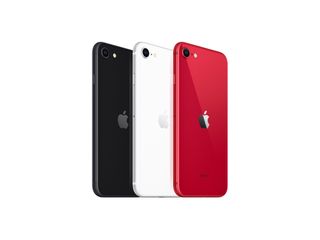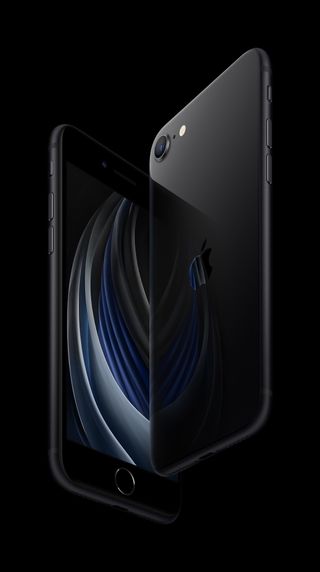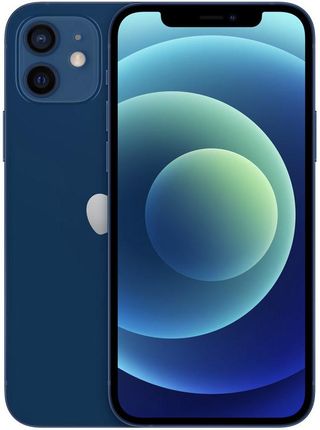The new iPhone SE (2020) is here!

The new iPhone SE is here. That's right. Not iPhone 9. Just iPhone SE, the second generation. Just the iPhone SE, new and improved for 2020.
It's replacing the iPhone 8 in Apple's lineup, though not completely the iPhone 8 Plus yet.
And I'm not just going to tell you what it is. I'm going to tell you why it is and, most importantly, who it's for. Even and especially if that's not you or… even me.

Everything old is new again.
The iPhone SE (2020) is Apple's latest low-cost iPhone and it's got everything you'd want in a sub-$500 phone in 2020.
Classic on the outside

The original iPhone SE came out in the age of the big and bigger iPhone 6s and iPhone 6s Plus, and the first part of its value proposition was having the then-classic iPhone 5s design — smaller and more squared-off — that some of Apple's customers not only preferred but genuinely loved.
This new iPhone SE comes out in the age of the even bigger-screened iPhone 11 and iPhone 11 Pro Max, and part of its value proposition is having the now-classic iPhone 8 design — complete with the Home button and Touch ID — that some of Apple's customer base maybe don't love in the same way but definitely prefer. Especially in the age of face masks.
Now, I do think the iPhone 8 design, based on the iPhone 6 design, isn't anywhere nearly as iconic as the iPhone 5 design, which was based on my absolute favorite to date, the iPhone 4. And it's nowhere nearly as small either. Blame the power and thermal demands of modern chipsets.
But, it's as close as we're going to get for now — with the same inductive charging on the glass back and 4.7-inch wide gamut, TrueTone LCD display on the front — as the iPhone 8.
Master your iPhone in minutes
iMore offers spot-on advice and guidance from our team of experts, with decades of Apple device experience to lean on. Learn more with iMore!
Yes, it's low resolution, with an even smaller quantity of pixels than the iPhone XR or 11, but it's still Retina density, and thanks to Apple's color calibration and management, is still about the highest quality LCD on the market.
It's not OLED and not edge-to-edge, of course, but those aren't things people who'll want this iPhone will care about. They won't even care that it has a huge honking forehead and chin the likes of which we haven't seen since '17.
They'll only care that it makes room for a front-facing Home button and Touch ID sensor… which to them isn't a dealbreaker but a feature. Same with the Lightning connector that fits all existing accessories.
It comes in white, black, and red, which isn't as many colors as the iPhone 11 but… red.
It should fit in existing iPhone 8 cases, but Apple has some new ones specially for the new SE as well.
And has the same water resistance as the iPhone 8 and same Haptic Touch as the iPhone 11. Speaking of which…
Modern on the inside
The second part of the original iPhone SE's value proposition was having the same internals as the then-current flagship iPhone 6s. Same Apple A9 system-on-a-chip. Same 12 megapixel, 1080p60 wide angle camera. Which appealed to people who were holding onto their older, smaller iPhones, because they really did like the size, even if they also lusted after the latest and greatest specs. Getting that original SE triggered those specific people to upgrade in numbers beyond even Apple's original demand forecasts.
This new iPhone SE has the same internals as the now current flagship iPhone 11 and Pro. Same A13 SoC. Same 12-megapixel, 4K60 wide angle camera. And that's going to appeal to people who were holding onto their old, Home button iPhones, because they felt more comfortable with that escape hatch and fingerprint system, but who legit do want a new version that'll last them several or more years to come. So, getting this new SE may again trigger those people to upgrade in a way that the iPhone 11 didn't.
Now, it doesn't have a dual camera system, though that may eventually come in a Plus model. But it does have iPhone XR-style dual-pixel, segmentation masking Portrait Mode and Portrait Lighting. At least for people. Sorry pets and beverages.
And, thanks to monocular depth estimation, machine learning, and segmentation masking, to the 7-megapixel front-facing camera as well.
It also doesn't have 5G, of course, but neither does most of the world still, at least in any meaningful way. It does have dual SIM with eSIM, though, which will be useful in many parts of the world.
Personally, I've gotten used to the bells and whistles of the iPhone 11 series, like the ultra-wide angle cameras, but the main wide-angle is still the most capable — the best — camera on any iPhone and that's what we've got here. That includes the chipset and the image signal processor for everything from the semantic rendering of Smart HDR, to Quick Take video.
No Night Mode though, which seems like a wicked obvious omission. But the base camera tech will be better at low light than every other iPhone not numbered 11.
There's the typically anemic 5-watt USB-A charger in the box but you can buy a better, faster USB-C adapter to fast charge.
Frankly, the A13 Bionic is over-powered for what you can do with the iPhone SE today. It'll handle even the most complex photo filters and augmented reality experiences with not just ease, but panache.
What it's really meant to do, though, is provide enough breathing room, enough overhead, to handle the next 3-5 years of iOS updates and apps, so that the investment you make today keeps paying off tomorrow, whether you hold on to it, sell it, trade it, or hand it down.
Entry Level Pricing
The third and final part of the original iPhone SE's value proposition was the price. It started at $399 for 16GB. That made it appeal not only to people who wanted that classic design, and people that wanted the latest internals, but people who wanted it all for less than the price of a typical flagship iPhone. It let the original iPhone SE serve multiple markets, which meant ultimately serving a bigger market.

The new iPhone SE starts at $399 for 64GB. Same price, bigger storage. And just $50 more 128 and an option for 256GB as well. That'll make it appeal not only to people who wanted that classic iPhone home button and Touch ID, and people who want the updated internals, and regardless of either of those two things, people for whom even $699 is still to big a price for a new iPhone. It will let the new iPhone SE similarly serve multiple markets, which will hopefully also again mean serving a bigger market.
Even if it's not the tech nerd market, the early adopter market, the anyone who just can't wait for the next big thing market.
Not for me, maybe not for you, and certainly not for all the pundits who I bet are already typing furiously onto the internet, livid it even exists, hot taking all over it.
But for everyone in every tech nerd's family who isn't a tech nerd, who wants things to just slow down, who comes due for an upgrade and just wants something that's familiar, recognizable… exactly what they already have... only better.
And, for them, that'll make picking up the new iPhone SE just a no brainer.

Rene Ritchie is one of the most respected Apple analysts in the business, reaching a combined audience of over 40 million readers a month. His YouTube channel, Vector, has over 90 thousand subscribers and 14 million views and his podcasts, including Debug, have been downloaded over 20 million times. He also regularly co-hosts MacBreak Weekly for the TWiT network and co-hosted CES Live! and Talk Mobile. Based in Montreal, Rene is a former director of product marketing, web developer, and graphic designer. He's authored several books and appeared on numerous television and radio segments to discuss Apple and the technology industry. When not working, he likes to cook, grapple, and spend time with his friends and family.
Most Popular




